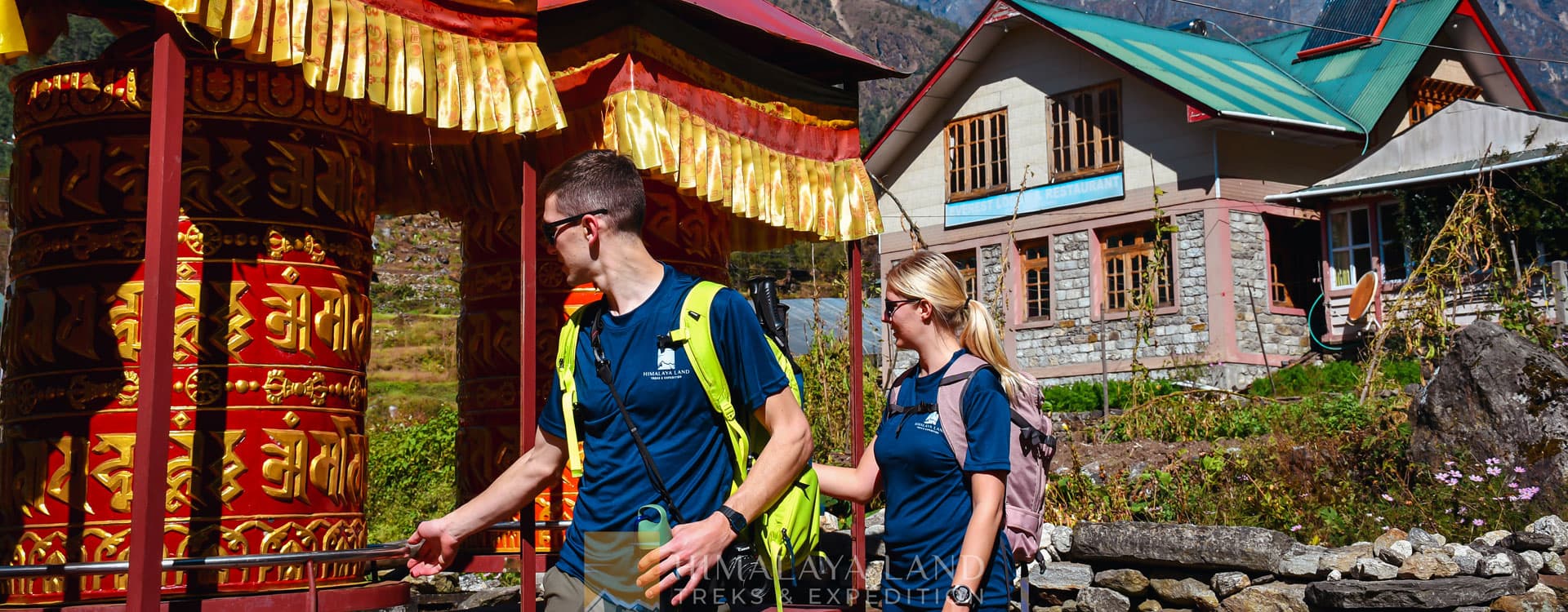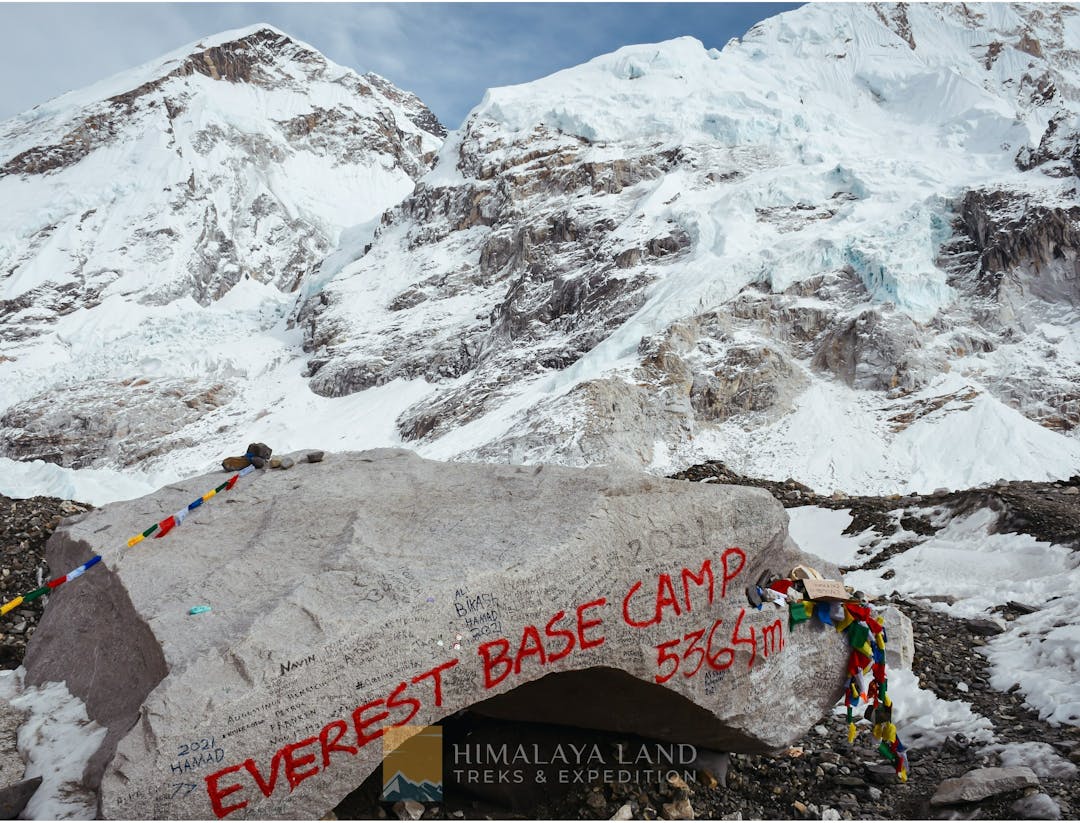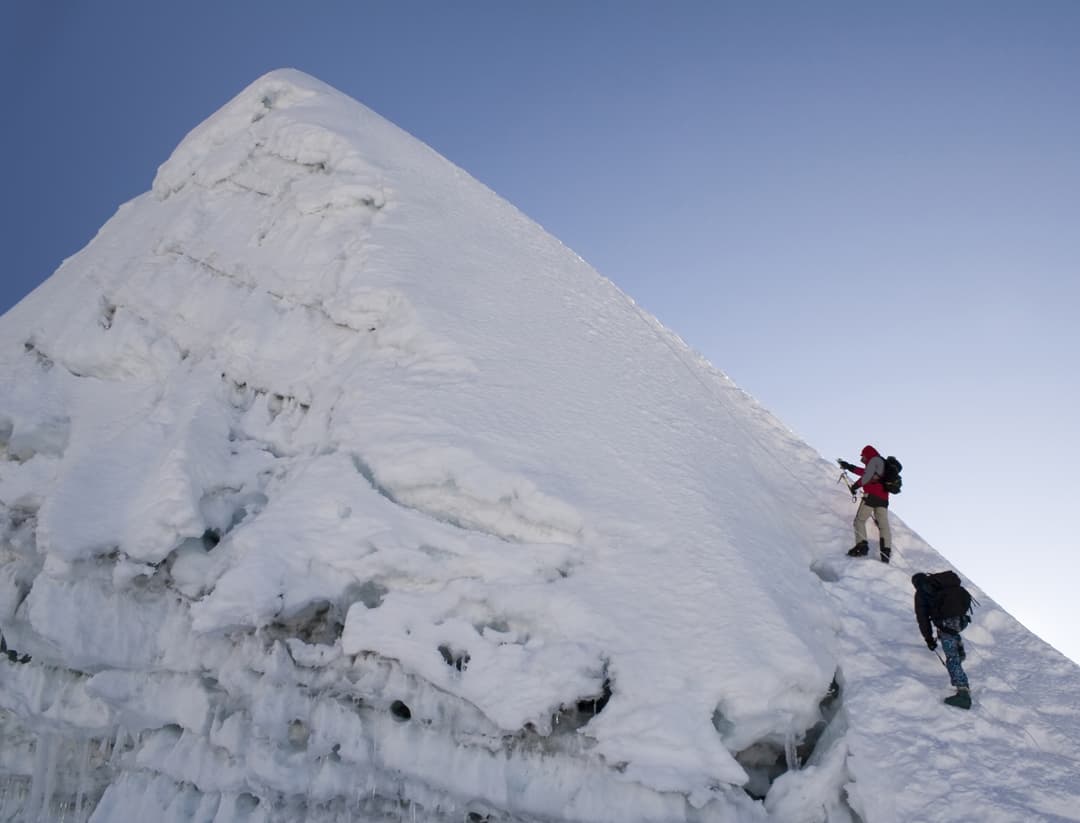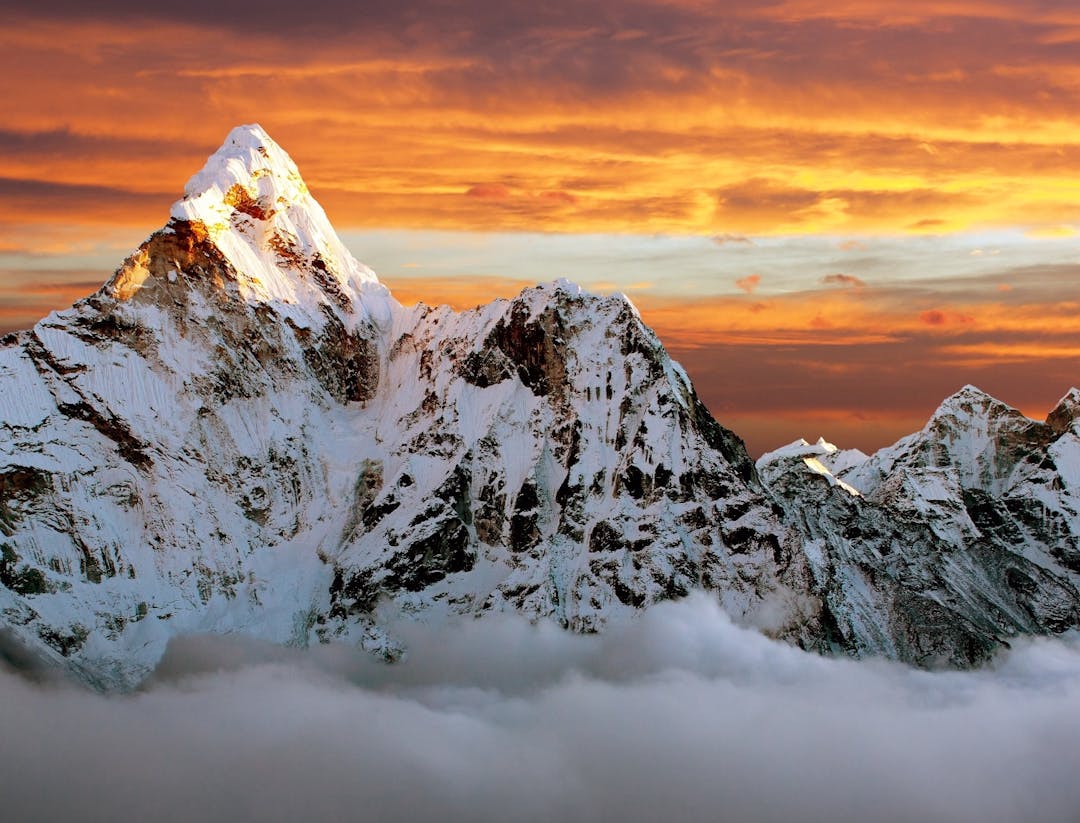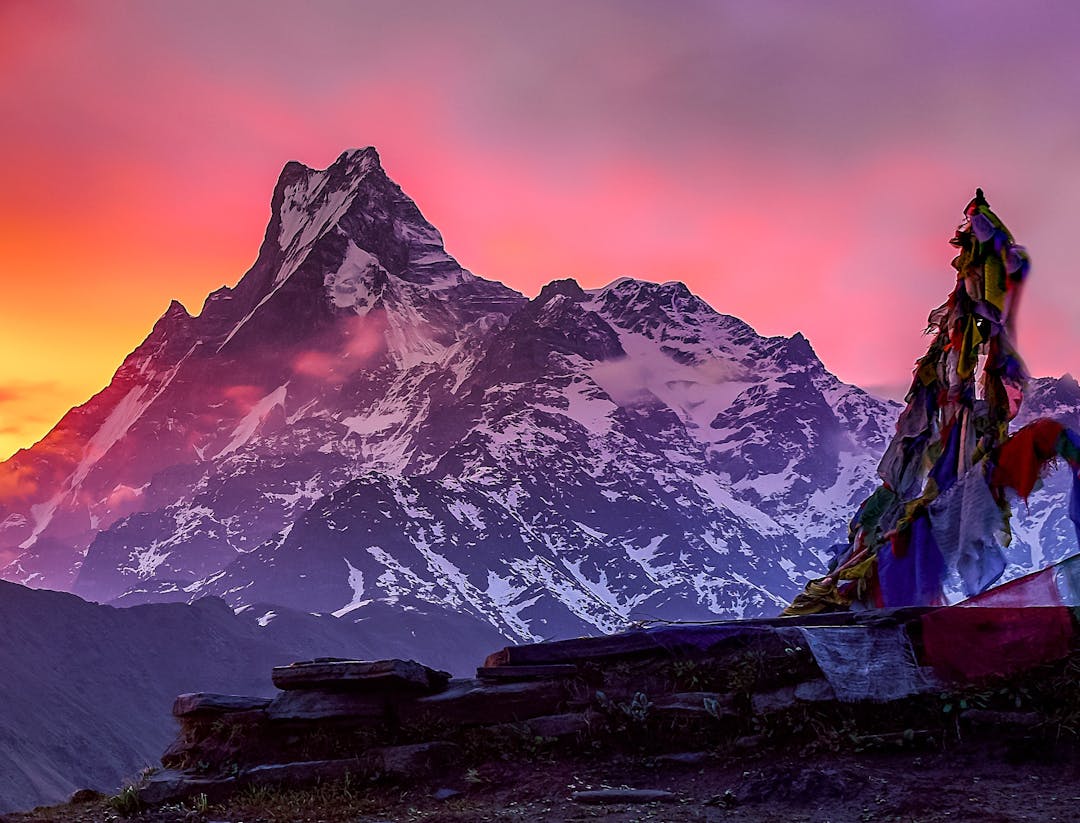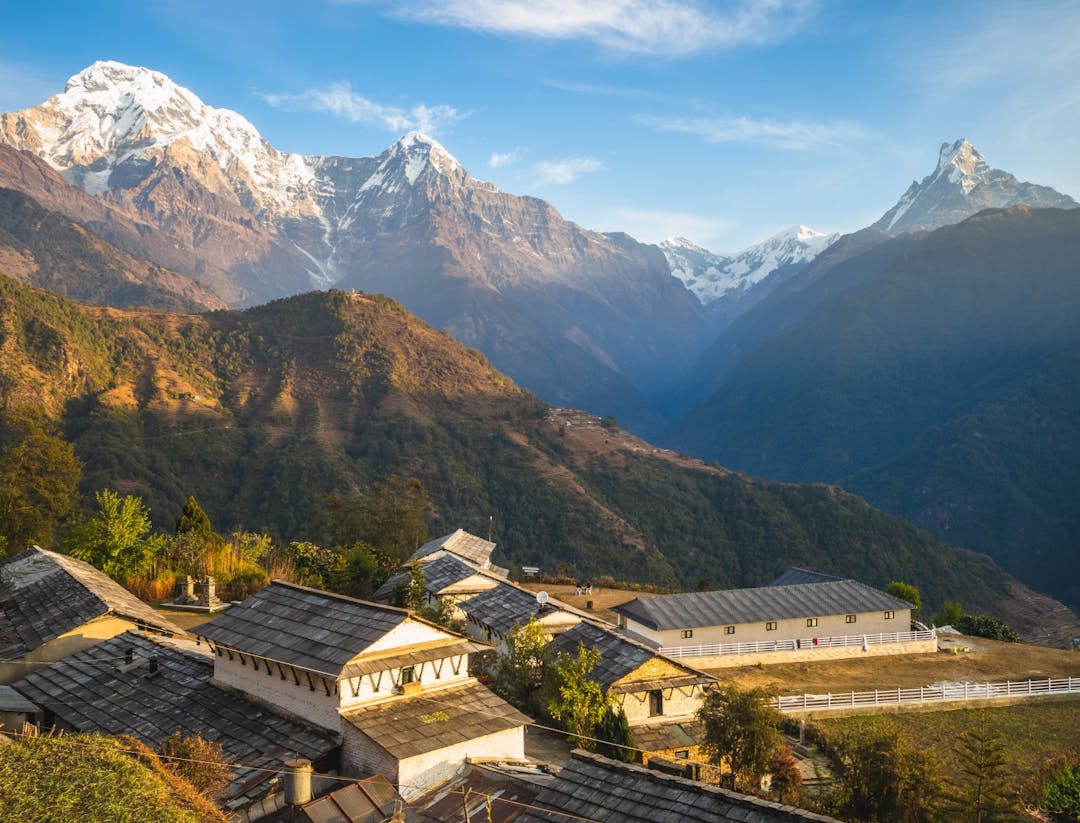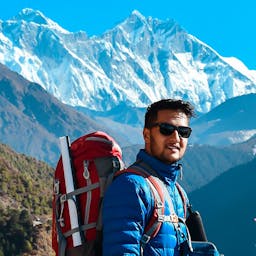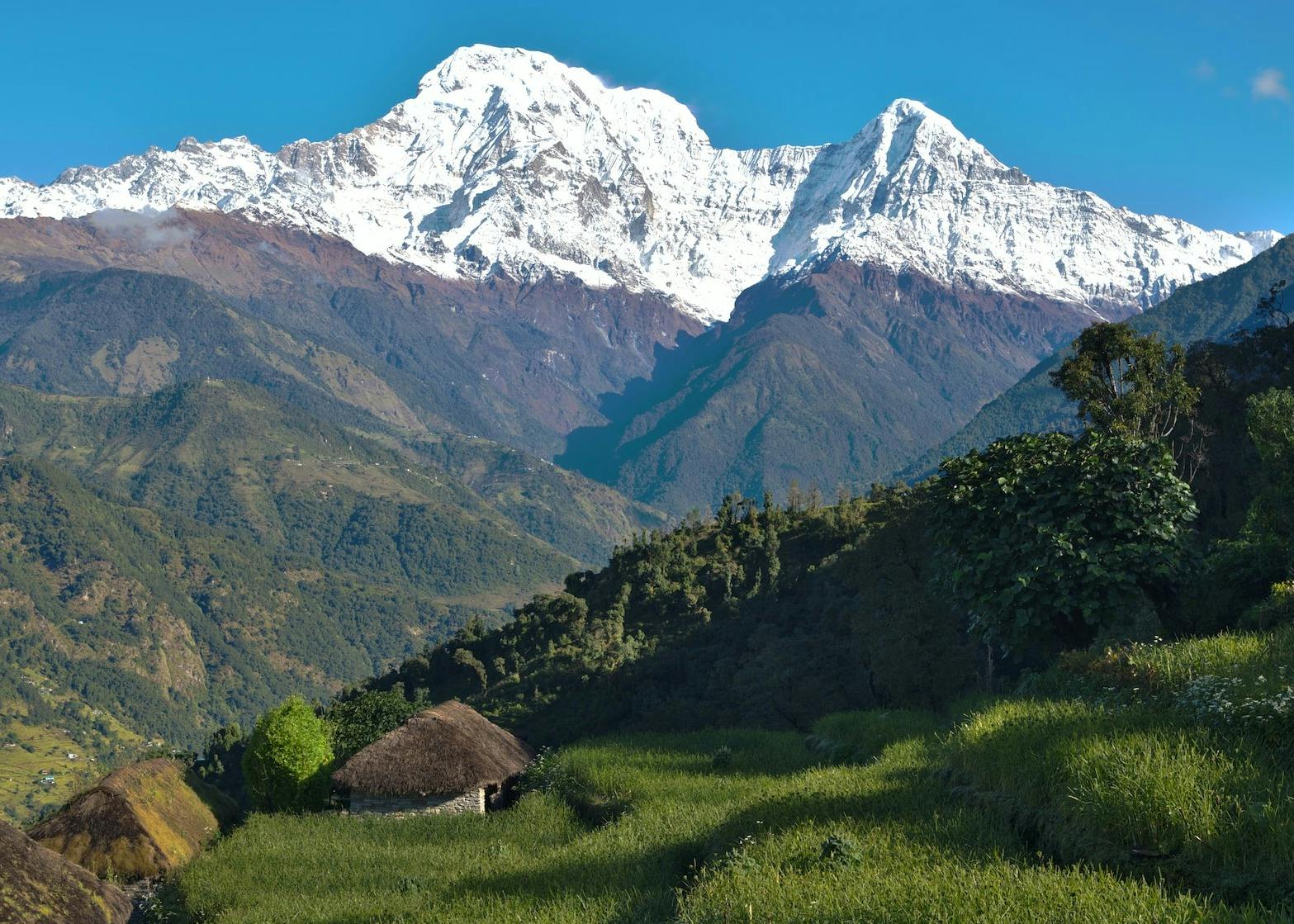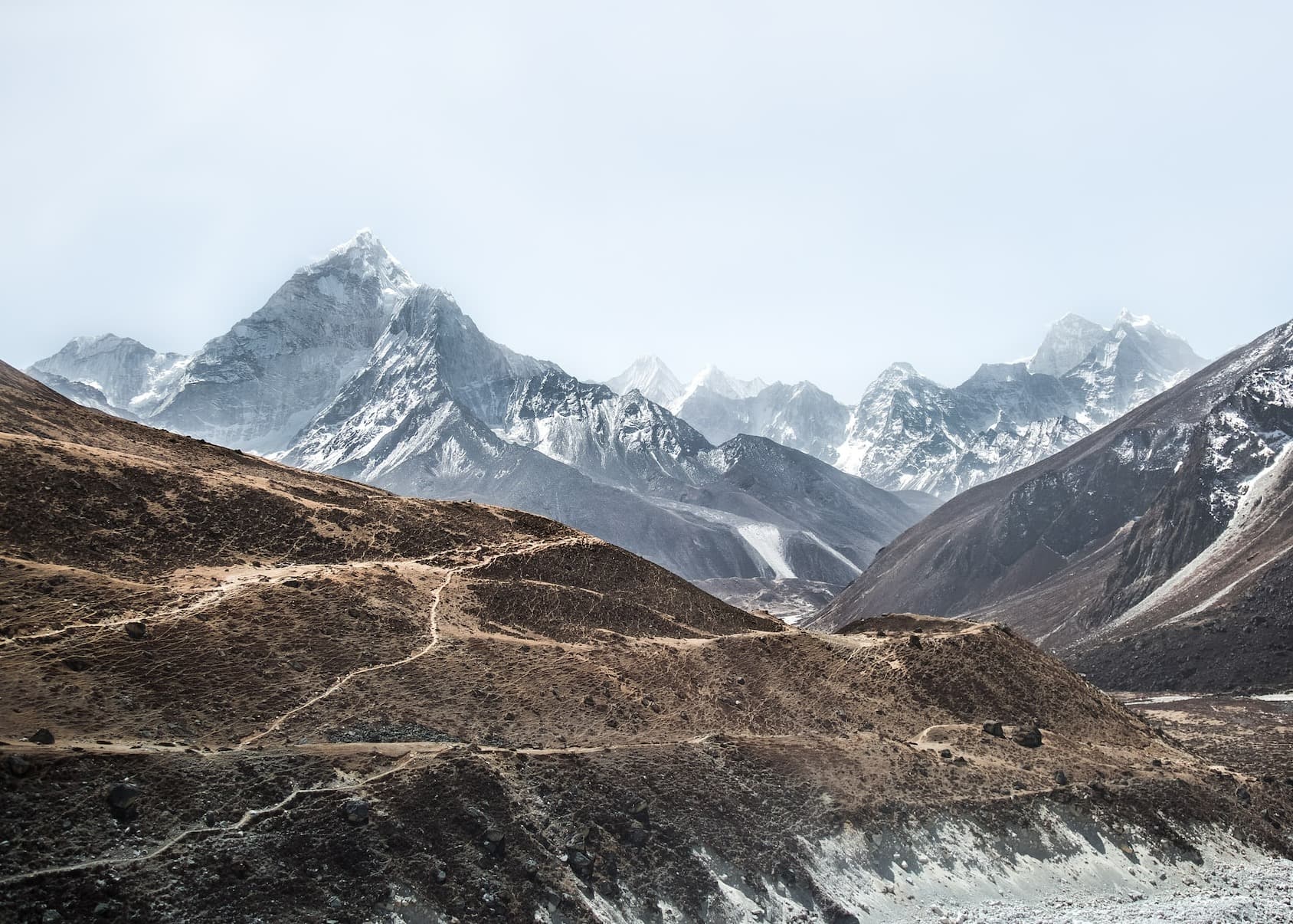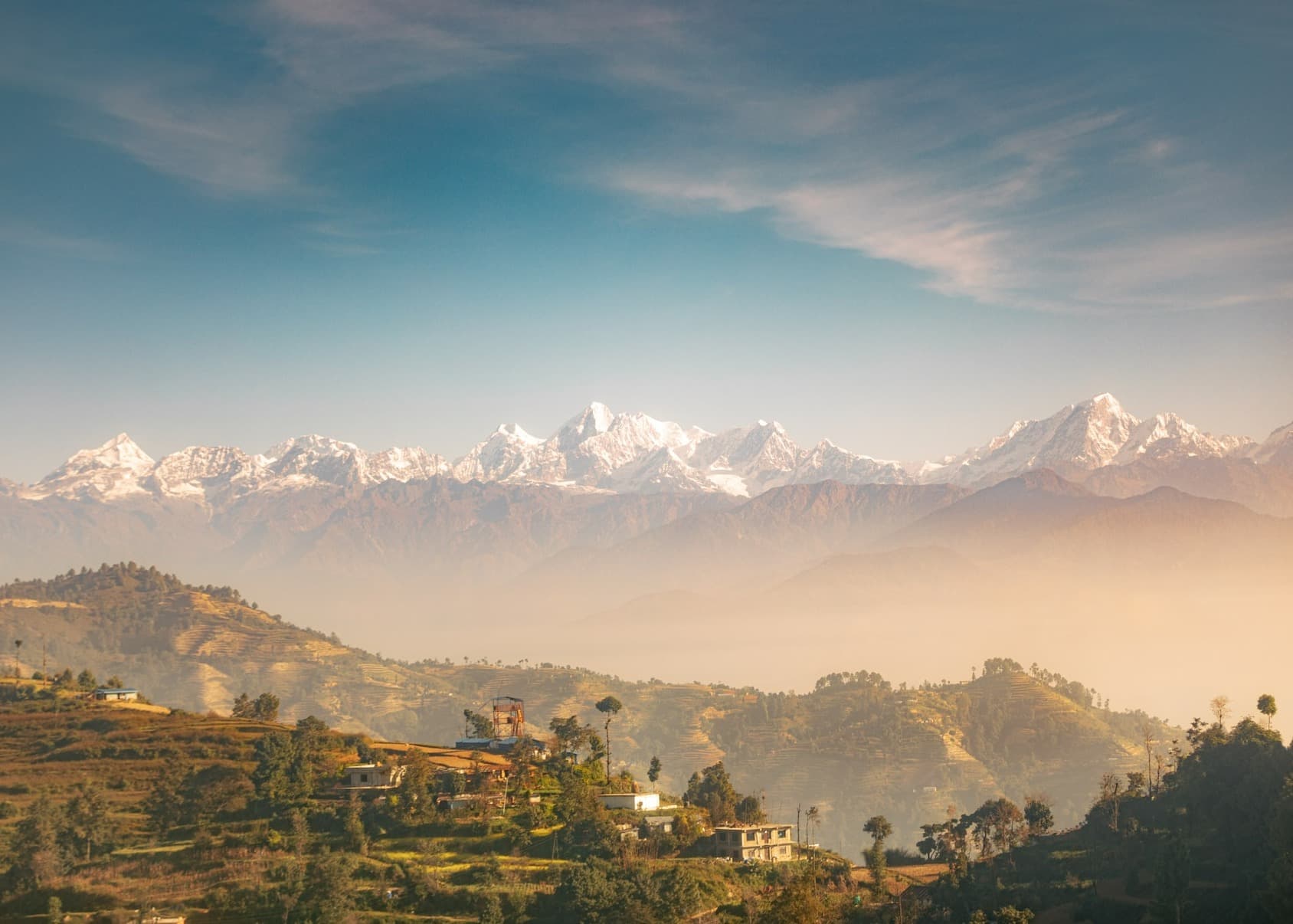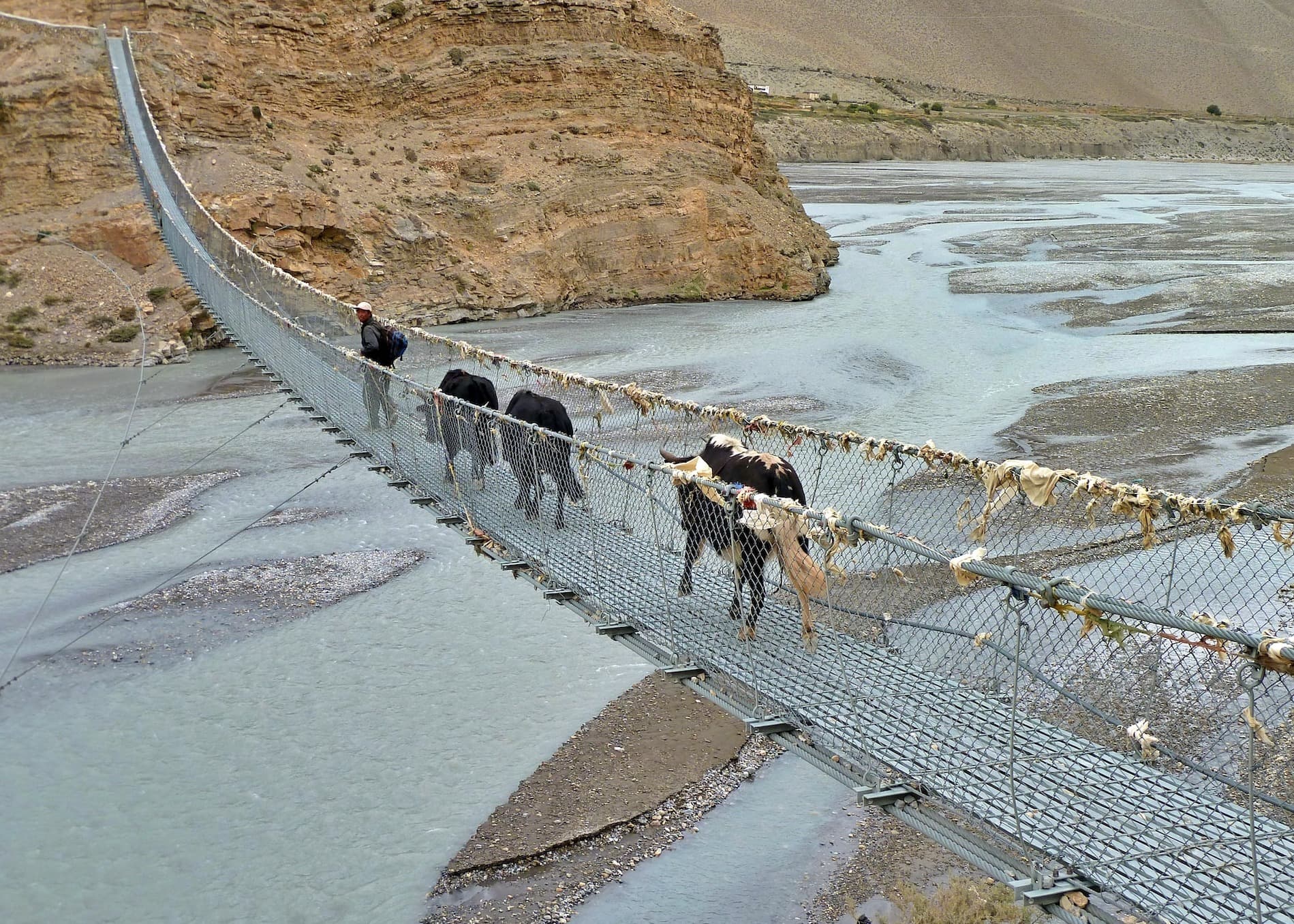- Understanding the Everest Three Passes Trek
- Planning and Preparation
- Obtaining Necessary Permits
- Itinerary and Route Options for the Everest Three Passes Trek
- Accommodation and Teahouse Lodges
- Altitude Sickness and Acclimatization
- Safety and Health Considerations
- Travel Insurance
- Safety Precautions: Tips for Staying Safe on the Trail
- Sherpa Culture and Traditions
- Leave No Trace Principles
- Responsible Tourism
- Budgeting and Costs for the Everest Three Passes Trek
- Recommended Travel Agencies and Guides
- Capturing Memories on the Everest Three Passes Trek
Embark on an epic journey through the heart of the Himalayas with the Everest Three Passes Trek. This exhilarating adventure takes you through stunning landscapes, charming Sherpa villages, and awe-inspiring mountain vistas. In this comprehensive guide, we'll provide you with all the information you need to plan and conquer this remarkable Everest three passes trek in 2024. From preparation and permits to the best time to visit and essential gear, we've got you covered. Get ready to experience the magic of the Everest Three Passes Trek!
Understanding the Everest Three Passes Trek
Overview of the route
The Everest Three Passes Trek is a challenging and rewarding adventure that takes you through some of the most breathtaking landscapes in the world. The route encompasses three high mountain passes - Gokyo Ri, Cho La Pass, and Renjo La Pass - along with a visit to Everest Base Camp. This trek offers a unique perspective of the Everest region, allowing trekkers to explore less crowded trails while still experiencing the iconic highlights of the area.
Length and difficulty
The Everest Three Passes Trek is a strenuous trek suitable for experienced trekkers with a good level of fitness and prior high-altitude trekking experience. The entire trek typically takes around 18 to 20 days, depending on the specific itinerary and acclimatization days included. The trail involves long hours of walking, steep ascents and descents, and significant altitude gains. Trekkers should be prepared for challenging terrain and varying weather conditions, including cold temperatures and occasional snowfall.
Highlights along the way
Gokyo Lakes: Situated in the Gokyo Valley, these mesmerizing turquoise lakes are a sight to behold. Surrounded by snow-capped peaks, including Cho Oyu, the world's sixth highest mountain, the Gokyo Lakes offer a tranquil and awe-inspiring setting.
Ngozumpa Glacier: As you trek towards Cho La Pass, you'll encounter the Ngozumpa Glacier, the largest glacier in the Himalayas. The glacier's icy expanse and crevasses create a captivating landscape, showcasing the power and beauty of nature.
Khumbu Icefall: On the way to Everest Base Camp, you'll pass through the notorious Khumbu Icefall. This treacherous section of the Khumbu Glacier is filled with towering ice seracs and deep crevasses, offering a glimpse into the immense challenges faced by mountaineers attempting to summit Everest.
Everest Base Camp: The ultimate destination of the trek, Everest Base Camp, is a significant milestone for adventurers. Standing at the base of the world's highest peak, you'll have the opportunity to soak in the awe-inspiring surroundings and witness the determination of climbers preparing for their ascent.
Panoramic Mountain Views: Throughout the trek, you'll be treated to breathtaking panoramic views of some of the world's highest peaks, including Mount Everest, Lhotse, Makalu, and Cho Oyu. The ever-changing vistas of snow-capped mountains, deep valleys, and rugged terrain will leave you spellbound.
Sherpa Culture and Villages: Along the route, you'll have the chance to interact with the warm and welcoming Sherpa people, renowned for their mountaineering prowess. Visit traditional Sherpa villages like Namche Bazaar, Dingboche, and Thame, where you can immerse yourself in their rich cultural heritage.
The Everest Three Passes Trek offers an unparalleled opportunity to explore the Everest region from different angles, unveiling the stunning beauty of the Himalayas and providing a deeply enriching and transformative experience for trekkers.
Planning and Preparation
Fitness and Training
Embarking on the Everest Three Passes Trek requires a good level of physical fitness and stamina. It is recommended to start preparing well in advance to ensure you can comfortably tackle the challenges of the trek. Here are some fitness and training tips:
Cardiovascular Fitness: Engage in activities such as hiking, jogging, cycling, or swimming to improve your cardiovascular endurance.
Strength Training: Focus on building strength in your leg muscles, as well as your core and upper body, to handle the steep ascents and descents.
Endurance Training: Gradually increase the duration and intensity of your hikes to build endurance and prepare your body for long hours of walking.
Altitude Training: If possible, consider incorporating altitude training or simulated altitude exercises into your training regimen to acclimatize your body to the reduced oxygen levels at high altitudes.
Obtaining Necessary Permits
To trek in the Everest region, you will need to obtain two essential permits:
TIMS (Trekkers' Information Management System) Card: This permit is required for all trekkers and can be obtained through a registered trekking agency or directly from the Nepal Tourism Board in Kathmandu. The TIMS card helps in maintaining records of trekkers and ensuring their safety.
Sagarmatha National Park Entry Permit: The Everest region falls within the Sagarmatha National Park, and you must obtain an entry permit. This permit can be obtained from the Nepal Tourism Board in Kathmandu or the entry checkpoint in Monjo, along the trekking route.
Choosing the Best Time to Trek
The Everest Three Passes Trek can be undertaken during two primary seasons: Spring (March to May) and Autumn (September to November). Consider the following factors when choosing the best time for your trek:
Weather Conditions: Both seasons offer stable weather with clear skies, making for excellent visibility of the mountains. Spring brings mild temperatures, while autumn is slightly colder.
Peak Seasons: Autumn is the peak trekking season, attracting more trekkers and resulting in busier trails and teahouses. Spring is also popular but relatively less crowded.
Festivals and Events: Consider attending cultural festivals like Tihar and Mani Rimdu, which usually take place in autumn, adding a unique cultural experience to your trek.
Personal Preferences: Consider your tolerance for cold temperatures and your availability to align with the preferred season.
Ultimately, the choice of the best time to trek the Everest Three Passes depends on your preferences for weather, crowd levels, and the overall experience you desire. Both spring and autumn offer their own unique advantages, so weigh the factors that are most important to you and plan accordingly.
If you prefer milder temperatures and want to witness the region's vibrant rhododendron blooms, the spring season is a great option. However, keep in mind that the trails may be busier during this time, and advance bookings for accommodations are recommended. Additionally, the occasional rainfall during spring should be considered when packing appropriate gear.
On the other hand, autumn brings cooler temperatures and generally stable weather conditions, making it an ideal time for clear mountain views and comfortable trekking. The trails are still busy, but not as crowded as in spring. You'll have a chance to witness the harvest festivals and cultural celebrations in the local villages, adding a cultural dimension to your trek.
It's also worth noting that trekking during the shoulder seasons of March-April or October-November can offer a balance between favorable weather conditions and manageable crowd levels.
Before finalizing your trekking dates, consider checking the latest weather forecasts and consulting with local trekking agencies or experienced trekkers who have recently completed the Everest Three Passes Trek. They can provide insights into the current trail conditions and help you make an informed decision based on real-time information.
Remember to be flexible and prepared for changing weather conditions regardless of the season you choose. Pack appropriate clothing layers, including warm and waterproof gear, and be prepared for temperature variations as you ascend to higher altitudes.
By carefully considering your fitness level, obtaining the necessary permits, deciding on hiring a guide or going solo, and selecting the best time to trek, you'll set yourself up for a successful and enjoyable Everest Three Passes adventure in 2023.
Essential Gear and Packing List
To ensure a comfortable and safe trek on the Everest Three Passes route, it's crucial to pack the right gear. Here's a comprehensive list of essential items to consider:
Clothing
Base Layers: Moisture-wicking and quick-drying tops and bottoms to regulate body temperature.
Insulating Layers: Fleece jackets or down jackets for warmth during cold temperatures.
Outer Shell: Waterproof and breathable jacket and pants to protect against rain, snow, and wind.
Trekking Pants: Lightweight, quick-drying pants with zip-off legs for versatility.
Long-Sleeve Shirts: Lightweight shirts for sun protection and layering.
T-shirts: Breathable and moisture-wicking shirts for trekking.
Underwear: Moisture-wicking and comfortable underwear for both men and women.
Socks: Thick, moisture-wicking socks for trekking, with extra pairs as backups.
Hat or Beanie: Sun hat for protection against UV rays or a warm beanie for colder temperatures.
Gloves: Lightweight gloves for lower altitudes and warm, waterproof gloves for higher altitudes.
Neck Gaiter or Buff: Versatile accessory for sun protection, warmth, or dust protection.
Footwear
Sturdy Hiking Boots: Waterproof, ankle-supporting boots with good traction.
Socks: Comfortable, moisture-wicking hiking socks to prevent blisters.
Gaiters: Protective coverings worn over boots to keep debris, snow, and water out.
Equipment
Backpack: A comfortable and durable backpack with a capacity of 40-50 liters to carry your gear.
Sleeping Bag: Warm and lightweight sleeping bag suitable for cold temperatures.
Sleeping Pad: Insulated sleeping pad or mat for cushioning and insulation from the cold ground.
Trekking Poles: Adjustable trekking poles to provide stability and reduce strain on your knees and legs.
Headlamp: Essential for nighttime use and in teahouses with limited lighting.
Water Bottle: Durable water bottle or hydration bladder to stay hydrated along the trail.
Snacks: High-energy snacks like trail mix, energy bars, or chocolate for quick fuel during trekking.
Personal Items
Medications: Personal medications, altitude sickness medication, and a basic first-aid kit.
Toiletries: Toothbrush, toothpaste, biodegradable soap, quick-drying towel, and wet wipes.
Sunscreen and Lip Balm: High SPF sunscreen and lip balm with UV protection.
Sunglasses: Polarized sunglasses with UV protection to shield your eyes from intense sunlight.
Hat or Bandana: Sun hat or bandana for sun protection and to keep sweat at bay.
Personal Hygiene Products: Menstrual products, hand sanitizer, and small ziplock bags for waste disposal.
Trekking Towel: Quick-drying and lightweight towel for personal hygiene.
Water Purification Tablets: To treat water from streams and taps for safe drinking.
It's important to note that packing light is key to an enjoyable trek. Choose lightweight and multipurpose items whenever possible, and prioritize essential gear over non-essential items. Packing cubes or dry bags can help keep your belongings organized and protected from moisture.
Before your trek, familiarize yourself with the gear and ensure everything fits well and functions properly. Remember to break in your hiking boots before the trek to avoid blisters and discomfort.
By packing the right gear and personal items, you'll be well-prepared to tackle the challenges of the Everest Three Passes Trek while staying comfortable, safe, and ready to embrace the adventure.
Itinerary and Route Options for the Everest Three Passes Trek
Day 1: Arrival in Kathmandu
Upon your arrival in Kathmandu, you will be greeted by a representative from your trekking agency. They will assist with your transfer to the hotel and provide a briefing about the trek. Spend the day exploring the vibrant streets of Kathmandu and preparing for the trek.
Day 2: Fly to Lukla and Trek to Phakding (2,651m/8,700ft)
Take an early morning scenic flight to Lukla, the gateway to the Everest region. Start your trek from Lukla and descend to Phakding, a small village situated along the Dudh Koshi River.
Day 3: Trek to Namche Bazaar (3,440m/11,286ft)
Continue along the trail, crossing suspension bridges and passing through lush forests. Reach Namche Bazaar, the main trading hub of the Khumbu region, nestled in a bowl-shaped amphitheater.
Day 4: Acclimatization Day in Namche Bazaar
Take a rest day in Namche Bazaar for acclimatization. Explore the town, visit the Sherpa Cultural Museum, and enjoy panoramic views of Everest, Lhotse, and other surrounding peaks from the nearby viewpoints.
Day 5: Trek to Tengboche (3,860m/12,664ft)
Resume your trek, following a trail that offers magnificent views of the Himalayan giants. Reach Tengboche, home to the famous Tengboche Monastery, where you can witness evening prayers and immerse yourself in the serene atmosphere.
Day 6: Trek to Dingboche (4,410m/14,468ft)
Continue your ascent towards Dingboche, a picturesque village located in the Chhukung Valley. Enjoy stunning views of Ama Dablam and other peaks along the way.
Day 7: Acclimatization Day in Dingboche
Spend another day for acclimatization in Dingboche. You can take a short hike to Nagarjun Hill or Chhukung Valley to further acclimatize and enjoy the surrounding views.
Day 8: Trek to Lobuche (4,910m/16,109ft)
Resume your trek, crossing the Khumbu Khola and ascending towards Dughla. From there, continue to Lobuche, a small settlement situated close to the Khumbu Glacier.
Day 9: Trek to Gorak Shep (5,140m/16,863ft) and Everest Base Camp (5,364m/17,598ft)
Embark on an exhilarating journey to Gorak Shep, the last settlement before Everest Base Camp. Drop off your bags and continue towards Everest Base Camp, the iconic site from where climbers begin their ascent to Mount Everest. Return to Gorak Shep for an overnight stay.
Day 10: Hike to Kala Patthar (5,545m/18,192ft) and Trek to Lobuche
Early morning, hike to the summit of Kala Patthar, one of the best vantage points to witness the sunrise over Everest and the surrounding peaks. Descend to Gorak Shep and continue trekking back to Lobuche for the night.
Day 11: Cross Kongma La Pass (5,535m/18,159ft) and Trek to Chhukung (4,730m/15,518ft)
Embark on a challenging day as you cross the Kongma La Pass. The pass offers breathtaking views of the Everest region. Descend to Chhukung, a small village situated in the Imja Valley.
Day 12: Cross Cho La Pass (5,420m/17,782ft) and Trek to Dzongla (4,830m/15,850ft)
Today, you'll face another thrilling challenge as you cross the Cho La Pass. The pass offers stunning panoramic views of the surrounding peaks. Descend to Dzongla, a tranquil village nestled in the mountains.
Day 13: Trek to Gokyo Lakes (4,750m/15,583ft)
Continue your trek, following the trail that leads to the mesmerizing Gokyo Lakes. As you approach the lakes, you'll be greeted by the serene turquoise waters surrounded by majestic Himalayan peaks.
Day 14: Hike to Gokyo Ri (5,357m/17,575ft) and Explore Gokyo Valley
Embark on an early morning hike to Gokyo Ri, a renowned viewpoint that offers panoramic views of Everest, Makalu, Cho Oyu, and other peaks. Spend the day exploring the Gokyo Valley and enjoying the tranquil beauty of the lakes.
Day 15: Cross Renjo La Pass (5,360m/17,585ft) and Trek to Lungden (4,380m/14,370ft)
Today, you'll conquer the final pass of the trek, the Renjo La Pass. The pass rewards you with breathtaking views of Everest, Cho Oyu, and other surrounding peaks. Descend to Lungden, a small Sherpa village.
Day 16: Trek to Thame (3,820m/12,532ft)
Continue your descent as you trek towards Thame, a traditional Sherpa village with a rich cultural heritage. Explore the monastery and immerse yourself in the peaceful ambiance of the village.
Day 17: Trek to Namche Bazaar
Descend further to Namche Bazaar, retracing your steps through familiar trails. Enjoy the comforts of the bustling town and reflect on your incredible journey through the Everest region.
Day 18: Trek to Lukla
On the final day of the trek, hike back to Lukla, where you'll celebrate the completion of your Everest Three Passes adventure. Take this opportunity to relax, enjoy a hot shower, and reflect on the unforgettable experiences you've had.
Day 19: Fly to Kathmandu
Take an early morning flight from Lukla back to Kathmandu. Upon arrival, transfer to your hotel and spend the rest of the day at leisure. You can explore the vibrant streets of Thamel, indulge in Nepali cuisine, or simply relax and rejuvenate.
Day 20: Departure from Kathmandu
After breakfast, transfer to the airport for your departure. Bid farewell to the majestic Himalayas and carry the memories of your Everest Three Passes Trek with you.
Alternative Routes and Variations
Island Peak Extension: If you have mountaineering experience and wish to add an adventurous element to your trek, you can include an extension to Island Peak (6,189m/20,305ft) after reaching Chhukung. This requires additional days for acclimatization and climbing preparations.
Renjo La and Gokyo Ri Variations: Some trekkers choose to reverse the route, starting from Gokyo and crossing the Renjo La Pass first before continuing to Everest Base Camp and Kala Patthar. This alternative route offers a different perspective and allows for a gradual ascent in terms of altitude.
When considering alternative routes or variations, it's essential to consult with experienced trekking agencies and guides to assess the feasibility, safety, and duration of the additional routes. Factors such as weather conditions, physical fitness, and acclimatization must be taken into account when making these decisions.
Embarking on the Everest Three Passes Trek with Himalaya Land Treks will provide you with a thrilling and unforgettable adventure through the majestic Himalayas. With careful planning, adequate preparation, and the guidance of experienced professionals, you can experience the beauty of the Everest region while challenging yourself both physically and mentally.
During the trek, you'll have the opportunity to witness awe-inspiring landscapes, interact with the warm and welcoming Sherpa people, and immerse yourself in their rich cultural heritage. From the bustling streets of Kathmandu to the serene Gokyo Lakes, every step of the journey will be filled with unique experiences and breathtaking views.
To make the most of your trek, ensure you have a detailed day-by-day itinerary that accounts for acclimatization days and allows for a gradual increase in altitude. This will greatly enhance your chances of successfully completing the trek while minimizing the risk of altitude-related illnesses.
If you're up for an additional challenge and have the necessary skills and experience, you can consider incorporating alternative routes and variations into your itinerary. Whether it's climbing Island Peak or taking a different route by reversing the order of the passes, these variations can add an extra level of excitement and adventure to your journey.
Remember to choose a reputable travel agency like Himalaya Land Treks to ensure the safety and quality of your trekking experience. Their experienced guides and staff will provide you with the necessary support, local knowledge, and expertise to make your Everest Three Passes Trek a truly memorable and rewarding experience.
So, lace up your boots, pack your bags, and get ready for an incredible adventure on the Everest Three Passes Trek with Himalaya Land Treks. Prepare yourself for stunning vistas, cultural immersion, and personal triumph as you conquer the passes and create lifelong memories in the heart of the Himalayas.
Accommodation and Teahouse Lodges
The Everest Three Passes Trek offers a network of teahouse lodges along the trail, providing trekkers with comfortable accommodation, meals, and a place to rest and rejuvenate after a day of trekking. Teahouse lodges are basic but cozy, and they play a vital role in supporting trekkers throughout their journey.
Facilities and Comfort Levels: Teahouse lodges typically offer private or shared rooms with twin beds or bunk beds. Bedding and blankets are provided, but it's recommended to bring a sleeping bag for added warmth and comfort. Some teahouses may have attached bathrooms, while others have shared toilet facilities. Hot showers are usually available for an additional fee.
Common areas in teahouses often have dining halls or communal spaces where trekkers can relax, socialize, and enjoy meals. The lodges may have basic electricity, but it's advisable to carry a portable charger or power bank as electricity supply can be limited or unreliable.
Food: Teahouses along the trail serve a variety of meals, ranging from local Nepali dishes to international cuisine. Dal Bhat (rice, lentils, and vegetables) is a popular and nutritious choice among trekkers. Other options include pasta, soups, momos (dumplings), and fried rice. Tea, coffee, and hot beverages are readily available to keep you warm and hydrated. It's important to note that food options may become more limited as you ascend to higher altitudes, and prices may increase.
Popular Lodges and Recommended Places to Stay: There are numerous teahouses along the Everest Three Passes Trek, and the choice of where to stay may vary depending on factors such as personal preferences, availability, and recommendations from your guide or fellow trekkers. Some popular lodges along the trail include:
Namche Bazaar: The bustling town of Namche Bazaar offers a wide range of teahouse lodges with various amenities and comforts. Recommended lodges include Panorama Lodge, Khumbu Lodge, and Everest View Lodge.
Tengboche: Tengboche is home to the famous Tengboche Monastery and offers teahouses such as Tashi Delek Lodge, Himalayan Lodge, and Tengboche Lodge.
Dingboche: In Dingboche, teahouse options include Good Luck Lodge, Himalayan Lodge, and Good Karma Lodge.
Lobuche: Lobuche has teahouses like Oxygen Lodge, Mother Earth Lodge, and Eco Lodge Lobuche.
Tea House Etiquette and Cultural Considerations:
Respect for local customs and cultural traditions is crucial while staying at teahouse lodges. Here are some etiquette tips to keep in mind:
- Remove your shoes before entering the lodge or designated areas.
- Be mindful of noise levels, especially during early mornings and evenings when other trekkers may be resting.
- Observe proper hygiene practices and use designated toilet facilities.
- Engage in friendly and respectful interactions with lodge owners, staff, and fellow trekkers.
- Carry a reusable water bottle to minimize plastic waste and environmental impact.
- Be considerate of limited resources and use electricity and hot water sparingly.
By following these guidelines, you can contribute to a positive and respectful trekking experience for yourself and the local community.
Altitude Sickness and Acclimatization
Understanding Altitude Sickness: Altitude sickness, also known as acute mountain sickness (AMS), is a common concern during high-altitude treks. It occurs when your body doesn't adjust properly to the reduced oxygen levels at higher elevations. Symptoms of AMS may include headaches, dizziness, nausea, fatigue, loss of appetite
Safety and Health Considerations
Health Risks and Vaccinations: When trekking in the Everest region, it's essential to be aware of potential health risks and take necessary precautions. Here are some recommendations for a safe trek:
Consult a Travel Health Professional: Visit a travel health clinic or consult with a healthcare professional well in advance of your trek. They can provide personalized advice based on your medical history, current health status, and the specific requirements of the Everest region.
Vaccinations: Ensure that your routine vaccinations, such as tetanus, diphtheria, pertussis, measles, mumps, rubella, and influenza, are up to date. Additionally, consider vaccinations for diseases like hepatitis A and B, typhoid, and meningitis. Depending on your travel plans and duration of stay in Nepal, a vaccination for yellow fever may be required.
Altitude Sickness: Acute Mountain Sickness (AMS) is a common concern when trekking at high altitudes. To minimize the risk of AMS, follow proper acclimatization guidelines, ascend gradually, stay hydrated, and be aware of any symptoms such as headache, dizziness, nausea, or shortness of breath. Carry altitude sickness medication (such as acetazolamide) and consult with your healthcare professional about its usage.
Water and Food Safety: Drink only treated or boiled water during the trek to avoid waterborne diseases. Avoid consuming raw or uncooked food, and opt for well-cooked meals to minimize the risk of gastrointestinal issues.
Travel Insurance
Obtaining comprehensive travel insurance is highly recommended for any trek, including the Everest Three Passes Trek. Here's why it's important and what to consider when choosing a policy:
Emergency Medical Expenses: In the event of illness or injury during the trek, travel insurance can cover the cost of medical treatment, evacuation, and repatriation to your home country. Ensure that the policy includes coverage for high-altitude trekking and helicopter evacuation if necessary.
Trip Cancellation or Interruption: Travel insurance can provide reimbursement for non-refundable trip costs in case you need to cancel or cut short your trek due to unforeseen circumstances, such as illness, injury, or a family emergency.
Personal Belongings: Insurance can also offer coverage for lost, stolen, or damaged personal belongings, including trekking equipment and gear.
Read the Policy Details: Carefully review the policy coverage, exclusions, deductibles, and claim procedures. Ensure that high-altitude trekking is explicitly mentioned and that the coverage aligns with the activities you plan to undertake.
Declare Pre-existing Medical Conditions: If you have any pre-existing medical conditions, disclose them to the insurance provider when purchasing the policy. Some insurers may require additional coverage or exclusions for specific conditions.
Before purchasing travel insurance, compare different providers to find the policy that best suits your needs and offers comprehensive coverage for the Everest Three Passes Trek. Read reviews, consider the reputation of the insurer, and evaluate the level of customer support they provide.
By taking appropriate health precautions, including vaccinations and understanding altitude-related risks, as well as obtaining travel insurance, you can ensure a safe and secure trekking experience in the Everest region.
Safety Precautions: Tips for Staying Safe on the Trail
Trek with a Guide or Experienced Partner: At Himalaya Land Treks, we are dedicated to providing you with an exceptional and unforgettable trekking experience on the Everest Three Passes route. With our expertise, passion for the Himalayas, and commitment to your safety and satisfaction, we strive to make your trek a truly remarkable adventure. Here's why you should choose us as your trusted partner:
Acclimatization and Hydration: Proper acclimatization is crucial to avoid altitude sickness. Ascend gradually, take rest days, and stay hydrated by drinking plenty of fluids. Avoid alcohol and caffeinated beverages, as they can contribute to dehydration.
Weather Monitoring: Stay informed about weather conditions before and during your trek. Be prepared for changing weather patterns, such as sudden temperature drops, wind, rain, or snowfall. Carry appropriate gear to protect yourself from extreme weather conditions.
Follow Trail Markings: Stick to the established trails and follow the trail markings to ensure you stay on the correct route. Straying off the trail can be dangerous and lead to getting lost or encountering hazardous terrain.
Stay Connected: Carry a mobile phone with a local SIM card or a satellite phone for emergency communication. Inform someone back home or your trekking agency about your itinerary and expected return dates. Check in regularly to ensure your safety.
Sherpa Culture and Traditions
Respect Local Customs: Familiarize yourself with Sherpa culture and traditions before your trek. Be respectful in your interactions with the locals, follow their customs, and dress modestly, especially when visiting monasteries or sacred sites.
Learn Basic Phrases: Learn a few basic phrases in Nepali or Sherpa language to greet locals and show your interest in their culture. This small effort can go a long way in building rapport and fostering positive interactions.
Leave No Trace Principles
Minimize Waste: Carry a reusable water bottle and avoid single-use plastics. Dispose of waste properly by using designated trash bins or carrying it back to proper disposal facilities.
Preserve Natural Beauty: Do not litter or leave any trace of your presence along the trail. Respect the environment and wildlife by not disturbing or feeding animals, and avoid picking flowers or damaging vegetation.
Responsible Tourism
Support Local Communities: Stay in locally-owned teahouses and lodges, hire local guides and porters, and purchase locally-made products and crafts. This supports the local economy and helps communities thrive.
Conservation and Sustainability: Respect protected areas and wildlife habitats. Engage in environmentally friendly practices such as using biodegradable toiletries, conserving water and electricity, and respecting wildlife sanctuaries.
Cultural Sensitivity: Seek permission before taking photographs of individuals, religious sites, or cultural events. Respect local customs regarding photography and ask for consent when photographing locals.
By following these safety precautions and demonstrating cultural and environmental awareness, you can ensure a safe and respectful trekking experience on the Everest Three Passes route while contributing positively to the local communities and preserving the natural beauty of the region.
Budgeting and Costs for the Everest Three Passes Trek
Trekking Costs Breakdown
Permits: The Everest Three Passes Trek requires two permits: the TIMS (Trekkers' Information Management System) card and the Sagarmatha National Park entry permit. The TIMS card costs around $20 USD, and the national park permit costs approximately $30 USD. These fees are subject to change, so it's essential to check the current rates before your trek.
Accommodation: Along the trekking route, you'll find teahouses that offer basic accommodation. The cost of accommodation varies depending on the location and the level of comfort provided. On average, expect to pay around $15-25 USD per night for a basic room. Keep in mind that higher-altitude teahouses may charge slightly higher rates due to the difficulty of transporting supplies to those areas.
Meals: Most teahouses offer a wide range of meals, including Nepali, Tibetan, and international cuisine. The cost of meals also varies depending on the location. On average, budget around $20-30 USD per day for three meals, including snacks and drinks. Prices may be higher at higher altitudes due to the increased difficulty of transportation.
Additional Expenses: Other costs to consider include transportation to and from the trek starting point (typically Lukla), gear rental if needed, hot showers (available at some teahouses for an additional fee), charging electronic devices, and any personal expenses such as souvenirs or extra snacks.
Tips for Budget-Conscious Trekkers
Travel in the Off-Season: The peak trekking seasons in the Everest region are spring (March to May) and autumn (September to November), during which prices for accommodation and flights to Lukla can be higher. Consider trekking during the off-peak seasons (summer or winter) to potentially secure better deals on accommodation and flights.
Share Accommodation: If you're comfortable sharing a room, consider trekking with a partner or joining a group to split the cost of accommodation.
Negotiate Prices: In some cases, especially during the off-peak seasons, you may have room for negotiation on accommodation prices. It doesn't hurt to inquire about discounted rates, especially if you plan to stay for several nights in the same teahouse.
Recommended Travel Agencies and Guides
Himalaya Land Treks: Known for their expertise, professionalism, and commitment to customer satisfaction, Himalaya Land Treks comes highly recommended for organizing the Everest Three Passes Trek. They offer competitive pricing and a personalized approach to cater to your specific needs.
When choosing a travel agency or guide, consider factors such as their experience, customer reviews, safety records, and commitment to responsible tourism. Reach out to multiple agencies, compare prices, and inquire about the services they provide to ensure you find the one that best fits your budget and trekking preferences.
By budgeting wisely, being mindful of additional expenses, and choosing a reputable travel agency or guide, you can enjoy the Everest Three Passes Trek while keeping costs under control. Remember, it's essential to strike a balance between budget-conscious decisions and ensuring your safety and comfort throughout the journey.
Capturing Memories on the Everest Three Passes Trek
Photography Tips
- Essential Gear: Invest in a good quality camera or use your smartphone with a high-resolution camera. Make sure to carry spare batteries, memory cards, and a portable charger to keep your devices powered throughout the trek. A lightweight tripod can also be handy for stability during long exposures.
- Pack Wisely: Consider the weight and size of your photography gear when packing for the trek. Opt for versatile lenses that cover a range of focal lengths, allowing you to capture both wide-angle landscape shots and close-up details. A lens with good low-light performance is also beneficial for capturing the stunning Himalayan sunrises and sunsets.
- Timing is Key: Take advantage of the soft, warm lighting during the golden hours—early morning and late afternoon—to capture breathtaking landscapes. Additionally, the clear night skies in the Everest region provide excellent opportunities for astrophotography.
- Composition: Pay attention to the composition of your shots. Use elements such as leading lines, foreground interest, and the rule of thirds to create visually appealing photographs. Experiment with different perspectives and angles to capture unique and compelling images.
- Portraits and Cultural Interactions: The Everest region is rich in cultural experiences. Capture portraits of the friendly Sherpa people, their traditional attire, and their daily life. Seek permission before taking someone's photograph and be respectful of their privacy and cultural sensitivities.
Documenting Your Journey
- Keep a Trekking Journal: Bring a notebook or use a smartphone app to document your daily experiences, feelings, and observations. Write about the challenges you overcome, the stunning landscapes you encounter, and the memorable interactions with fellow trekkers and locals. Your journal will serve as a precious memento of your journey.
- Capture Moments Beyond Photos: While photography is a great way to capture memories, don't forget to be present in the moment. Engage with your surroundings, immerse yourself in the beauty of the Himalayas, and create lasting memories beyond the lens.
- Collect Mementos: Collect small mementos along the trek, such as pressed flowers, prayer flags, or ticket stubs, and keep them in a scrapbook or memory box. These physical reminders will bring back vivid memories when you look back on your adventure.
- Share Your Story: Once you've completed your trek, share your experiences with friends and family. Create a photo album, compile a travel blog, or make a video montage to share the beauty of the Everest Three Passes Trek and inspire others to embark on their own adventures.
Remember, while capturing memories is important, immerse yourself in the journey and embrace the moments without solely focusing on photography. The memories and experiences you create will be the most valuable souvenirs from your Everest Three Passes Trek.
In conclusion the Everest Three Passes Trek is a once-in-a-lifetime adventure that promises breathtaking landscapes, cultural immersion, and personal triumph. By following this comprehensive guide, you'll be well-prepared to tackle the challenges and savor the rewards of this extraordinary trek. Get ready to create unforgettable memories in the majestic Everest region in 2023. Lace up your boots, breathe in the crisp mountain air, and embark on an adventure of a lifetime!

